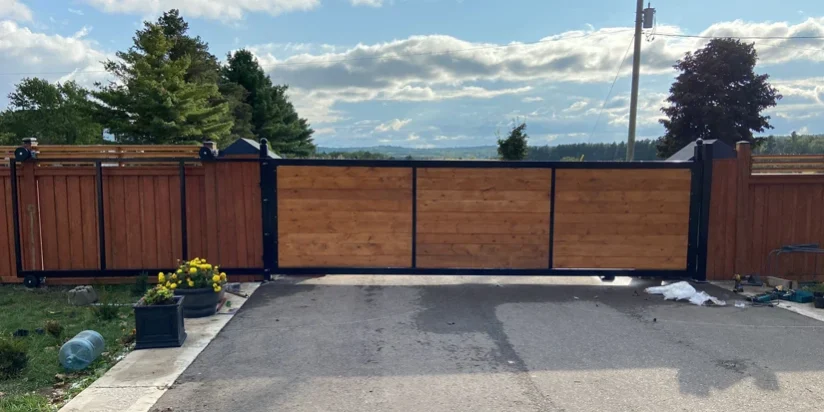Sliding gate automation brings smart access control to your property—offering the perfect blend of security, convenience, and style. Whether for a home or business, an automated sliding gate helps streamline entry while enhancing curb appeal. In this guide, we explore everything you need to know before installing one.
Why Choose a Sliding Gate?
- Space-Saving Design
Sliding gates open horizontally along a track, making them ideal for tight spaces or sloped driveways where swing gates won’t work. - Controlled Access
You can adjust the gate’s movement, speed, direction, and timing—providing precise control over property access. - Reliable Functionality
Especially useful where terrain challenges exist, sliding gates operate smoothly using either track or cantilever mechanisms.
Preliminary Considerations
Before installation, assess the following:
- Usage Needs
Will the gate be used frequently or only occasionally? Daily-use systems should be built with heavy-duty components. - Safety Features
Homes with children or pets need features like obstacle detection, auto-reverse, and safety sensors. - Design Preferences
Choose from materials like aluminum, wood, or steel to suit your aesthetic and functional goals.
Installation Essentials
Professional gate installation typically includes:
- Site Survey
Accurate measurements are taken to determine gate size, track length, slope, and clearance. - Surface Preparation
The base must be level and secure to support smooth gate movement. - Mechanical Setup
The gate is mounted on rollers or a cantilever system, and tested manually first. - Control Settings
Open and close points are programmed using the motor’s limit switches. - Sensor Integration
Safety sensors like photocells or bump edges are installed before powering the system. - Power & Accessories
The system is connected to power, and accessories such as remotes, intercoms, and cameras are installed.
Power & Control Systems
- Use a voltage setup that’s compatible with your site—typically 110–120 VAC systems with low-voltage outputs.
- The control board functions as the central hub, managing safety, movement, and user preferences.
- Modern systems can be integrated with Wi-Fi, smart home systems, and security features.
Safety & Regulations
- Compliant systems must include obstacle detection and fail-safes like auto-reverse.
- Lightweight materials such as aluminum are often used for better efficiency and safety.
- In case of power outages, all systems should include a manual release feature.
Optional Add-Ons
Enhance your system with:
- Remote controls or smartphone access
- Keypads and intercoms
- Photocells and loop detectors
- LED indicators or traffic lights
Maintenance Tips
- Clean tracks and rollers regularly to prevent buildup or wear.
- Inspect electrical components yearly to ensure optimal performance.
- Treat metal gates with anti-rust coatings and protect wood with proper sealants.
Budget & Installation
- Prices vary depending on gate size, material, motor type, and optional features.
- Hiring a professional ensures proper setup, long-term performance, and warranty coverage.
- Choosing a local provider offers faster support and cost-effective service calls.
Ready to Automate Your Gate?
Techno Gate GTA is your trusted expert in sliding gate automation across the Greater Toronto Area. We offer custom solutions that combine security, technology, and aesthetics—all tailored to your space.
Call us today at (905) 205-2550 to book your consultation and bring seamless access control to your property!




